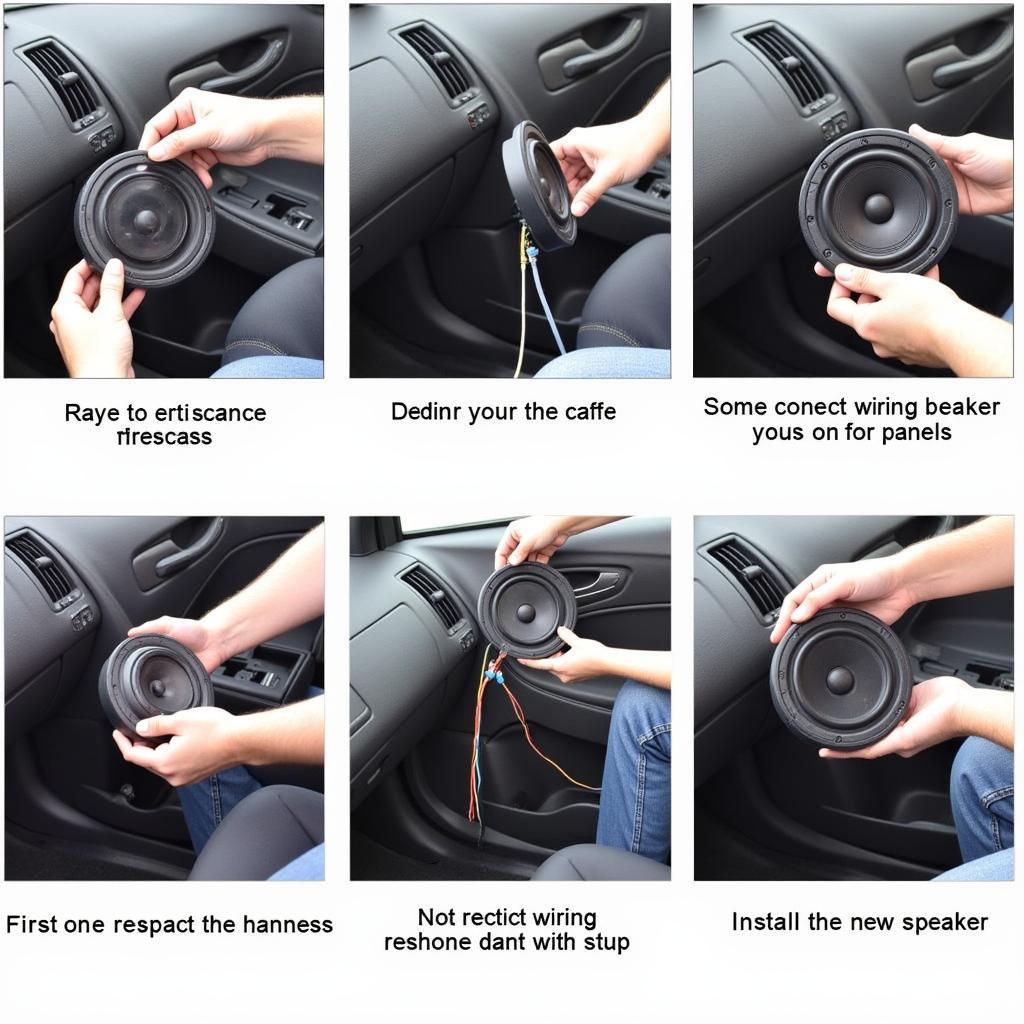Understanding Paint Cracking
Paint cracking, also known as “checking” or “crazing,” is a cosmetic defect that appears as a network of fine lines or cracks in the car’s paint finish. These cracks are often subtle at first, but they can become more pronounced over time, eventually leading to chips, peeling, and rust.
Causes of Paint Cracking
- Improper Preparation: The most common cause of paint cracking is inadequate surface preparation before painting. This can include failing to properly clean the surface, using incompatible primers or sealers, or applying paint too thickly.
- Environmental Factors: Extreme temperature changes, exposure to UV rays, and moisture can all contribute to paint cracking.
- Age and Wear: Over time, even properly applied paint can crack due to exposure to the elements and general wear and tear.
- Poor Quality Paint: Using low-quality paint or applying it incorrectly can lead to cracking and other paint defects.
- Underlying Damage: Cracks in the car’s bodywork can propagate through the paint, causing it to crack.
Diagnosing Paint Cracking
To effectively fix paint cracking, you need to determine its cause. Here’s how to diagnose the problem:
- Inspect the Affected Area: Carefully examine the cracked area to see if there are any signs of underlying damage, like dents or rust.
- Assess the Severity: Consider the depth and extent of the cracks. Shallow, superficial cracks may be easier to fix than deep, widespread cracks.
- Examine the Paint Finish: Check if the paint is peeling, chipping, or blistering, which may indicate more serious damage.
- Look for Other Issues: Are there any other paint defects present, such as fading, scratches, or inconsistencies in the finish?
 Car paint crack inspection
Car paint crack inspection
Repairing Paint Cracking
The best method for repairing paint cracking depends on the severity of the problem. Here are a few common approaches:
1. Light Cracking:
- Sanding and Polishing: For minor cracking, sanding down the affected area with fine-grit sandpaper and then polishing it with a paint sealant can help smooth out the surface and improve the appearance.
- Touch-Up Paint: Apply touch-up paint to match the existing paint color. This is a simple solution for minor cracks, but be sure to choose the correct color and apply it carefully to avoid further blemishes.
 Applying car touch-up paint
Applying car touch-up paint
2. Moderate to Severe Cracking:
- Sanding and Repainting: For more significant cracking, you may need to sand down the damaged area and repaint it. This involves removing the existing paint, applying a primer, and then applying multiple layers of paint.
- Professional Repair: If the cracking is extensive or involves underlying damage, it’s best to take your car to a professional body shop for repair. They have the tools and expertise to handle more complex repairs.
Expert Tips:
“If you’re unsure about repairing paint cracking yourself, it’s always best to consult a professional. A skilled technician can properly diagnose the cause of the problem and recommend the most appropriate repair solution.” – John Smith, Master Automotive Technician
“To prevent paint cracking in the future, make sure to regularly wash your car, wax it periodically, and avoid parking in direct sunlight whenever possible.” – Sarah Jones, Automotive Paint Specialist
 Applying car wax for protection
Applying car wax for protection
Conclusion
Paint cracking can be a frustrating problem, but it’s often fixable. By understanding the causes, diagnosing the issue, and choosing the appropriate repair method, you can restore your car’s paint to its original beauty. Remember, for extensive repairs, it’s always best to seek professional assistance.
If you need any assistance with paint cracking or other car repair needs, don’t hesitate to contact us at AutoTipPro:
Phone: +1 (641) 206-8880
Office: 500 N St Mary’s St, San Antonio, TX 78205, United States
FAQ
- Q: Can I prevent paint cracking from happening in the first place?
- A: Yes, you can. Proper car care, including regular washing, waxing, and avoiding harsh chemicals, can help prevent paint cracking.
- Q: Is it possible to fix paint cracking myself?
- A: For minor cracking, you can use sanding and polishing or touch-up paint. However, for more significant damage, it’s recommended to seek professional assistance.
- Q: How much does it cost to fix paint cracking?
- A: The cost of fixing paint cracking varies depending on the severity of the problem and the chosen repair method.
- Q: Can I use household items to fix paint cracking?
- A: While some DIY methods exist, they may not be effective and could potentially worsen the damage. It’s best to use products specifically designed for car paint repair.
- Q: How long does it take to fix paint cracking?
- A: The time required to fix paint cracking depends on the repair method and the extent of the damage. Minor repairs can be done quickly, while more complex repairs may take several days.
- Q: Will paint cracking ever come back?
- A: Paint cracking can reappear if the underlying cause isn’t addressed. It’s important to ensure proper surface preparation and address any underlying damage to prevent future cracking.
- Q: Should I be concerned about paint cracking?
- A: While paint cracking is a cosmetic issue, it can be a sign of underlying damage. If left untreated, it can lead to rust and other problems, so it’s important to address it as soon as possible.





Leave a Reply